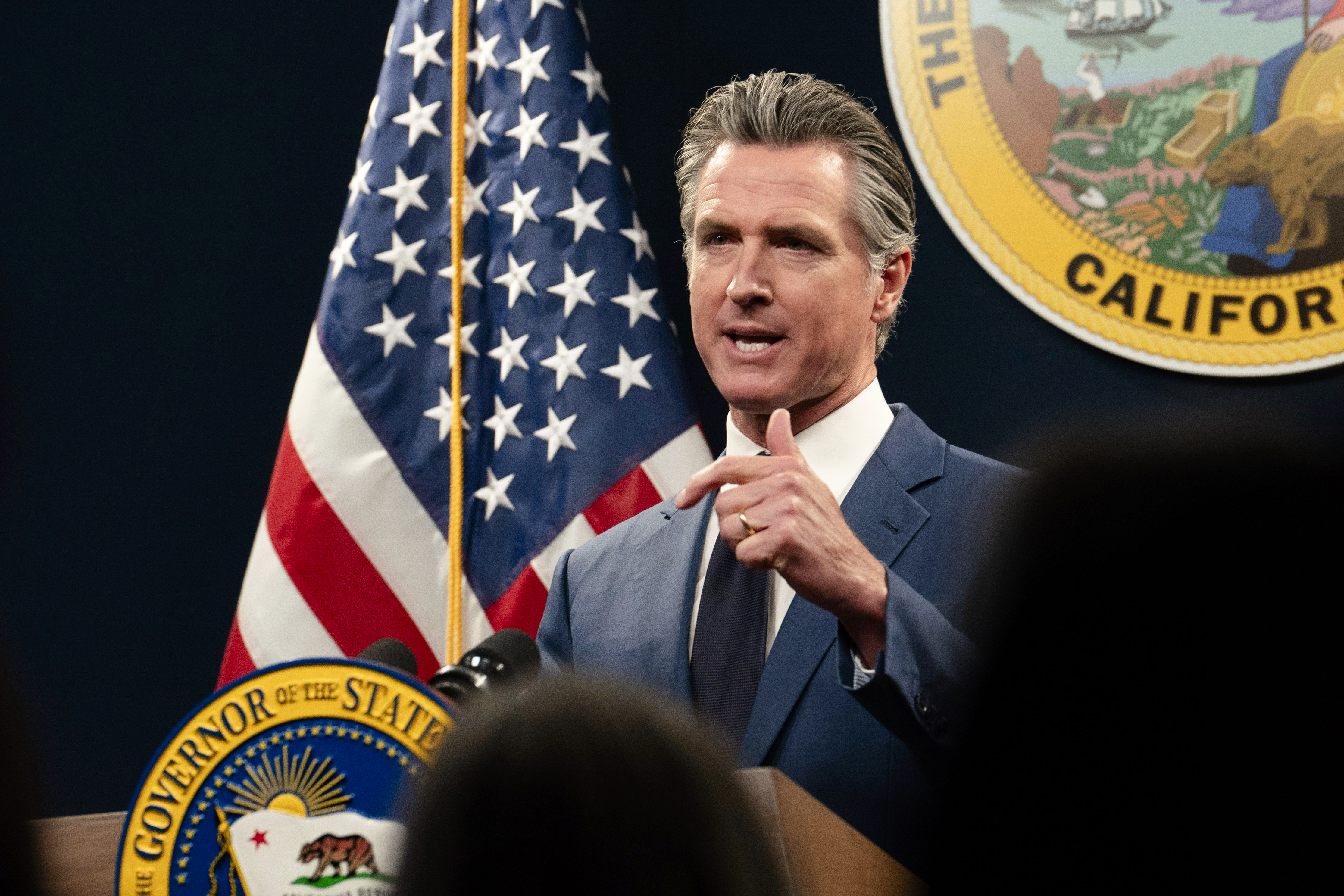With days to go before a balanced budget must be passed and signed into law, California Gov. Gavin Newsom announced June 22 that he had reached an agreement with the highest-ranking members of the Senate and Assembly.
“This agreement sets the state on a path for long-term fiscal stability—addressing the current shortfall and strengthening budget resilience down the road,” Mr. Newsom said in a press release. “I’m grateful for the partnership of our legislative leaders in meeting this challenge with balanced solutions that continue to make progress on California’s priorities.”
Senate President Pro Tem Mike McGuire and Assembly Speaker Robert Rivas worked with the governor to finalize a plan they said they believe protects core services and programs—including education, housing, and homelessness—while maintaining budget reserves.
Following through on the governor’s budget revision proposal released in May, the agreement spans the next two fiscal years to help balance the budget moving forward.
The agreement addresses a $46.8 billion budget deficit—after the Legislature passed a so-called “budget bill junior” bill in April solving an additional $17.3 billion in shortfalls.
“Make no mistake: This is a tough budget year, but it also isn’t the budget situation we were originally fearing,” Mr. McGuire said in the governor’s press release. “Thanks to hard work, tough decisions, and early actions, we’ve been able to shrink the shortfall, protect our progress, and maintain responsible reserves.”
The plan includes $16 billion in reductions—including an 8 percent cut in state operations of “nearly all departments,” although no guidelines have been given yet on how such would occur.
Some lawmakers believe that without further instruction, it will be difficult for agencies and departments to achieve such savings—which are slated to cut to $2.17 billion from the 2024–2025 fiscal year.
“The budget assumes that the agencies in the bureaucracy will each come up with these reductions without any oversight,” Sen. Roger Niello, vice-chair of the Senate’s Budget Committee, told The Epoch Times June 24. “There’s no guarantee that the full 8 percent will be realized, and I have my doubts.”
The governor’s office told The Epoch Times more details about the cuts will be hashed out by the Department of Finance later this year.
Other cuts include $1.5 billion, which encompasses the elimination of vacant positions with the state government.
The department that oversees the state’s prisons and corrections system will also see cuts totaling $750 million for vacant positions and operations—including maintenance and other areas, to be determined, with a goal of reducing spending without jeopardizing the safety of inmates or corrections officers.
Housing funding is also on the chopping block, with a reduction of $1.1 billion to some affordable housing programs.
Education-related cuts include more than a $1 billion collectively for programs providing student housing loans, allowing college students with financial needs to work paying jobs related to their area of study, and offering scholarships to the middle class.
Other education-related cuts include $500 million pulled from the Student Housing Revolving Loan Program, $485 million from the Learning Aligned Employment Program, and $110 million from the Middle-Class Scholarship Program.
Various health care workforce programs are also being reduced by $746.1 million overall.
Other cuts add up to more than $850 million, including a number of programs that seek to improve access to affordable housing.
Mr. Niello expressed concern that revenue projections in the budget are overly optimistic and will lead to further deficits in future years.
Such revenues will be increased by suspending a tax credit for some businesses, which Mr. Niello said will prove detrimental to businesses and negatively affect tax revenues in future years.
Another $5.1 billion in revenues over the same period will come from an increase in a tax on health care plan providers.
Reserves will be tapped to offset $12.2 billion in deficits over the next two fiscal years, in addition to $900 million from the state’s safety net fund.
Funding shifts of $6 billion, delays of $3.1 billion, and deferrals of $2.1 billion will also be employed to help balance the budget.
Delays include a two-year pause on a planned expansion to the state’s Food Assistance Program; a six-month delay in pay increases for providers of services for individuals with developmental disabilities; and a three-year hold on $550 million slated for expanding broadband access to rural Californians.
Meanwhile, some programs were restored from prior cuts proposed by the governor earlier this year in the final budget including $1 billion for grants to benefit homelessness assistance programs.
Additionally, a program that provides long-term, low-interest loans to construct or rehabilitate housing will receive $315 million, a housing and climate-related planning program will get $260 million, and $250 million is slated to help resolve homeless encampments.
Also, $500 million was set aside for a tax credit that provides incentives for private capital to fund low-income rental housing.
The Democrat leader of the Assembly said the now agreed-upon budget was the result of hundreds of hours of deliberations and public comments that took place during 72 budget committee meetings in that chamber.
“The Assembly fought hard to protect the public services that matter most to Californians, and we are delivering a budget that prioritizes affordability and long-term stability,” Mr. Rivas said in the governor’s press release. “This is a strong budget that reflects our Caucus’ commitment to Californians’ priorities.”














